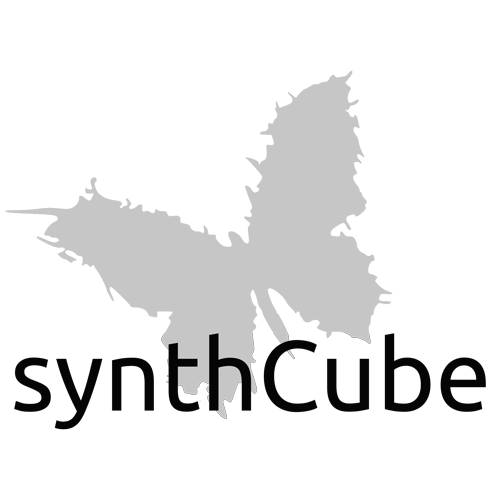Modular Synthesis
The modular synthesizer is a type of synthesizer, which exists in both physical and virtual forms, consisting of separate specialized modules. The modules are not hardwired together by the manufacturer but can be connected together with patch cords, a matrix patching system, or switches by the user to create a patch. The output (voltages) from the modules may function as (audio) signals, control voltages, or logic/timing conditions. Typical modules are oscillators (operate on frequency), filters (spectrum), amplifiers/gates (amplitude) and Envelope generators (dynamic control).
Types of modules
The basic modular functions are: signal, control, logic/timing. Typically, inputs and outputs are an electric voltage.
The difference between a synthesizer module and an effects unit is that an effects unit will have sockets for input and output of the audio signal and knobs or switches for the musician to control various parameters of the device (for example, the rate of a chorus pedal) while a synthesizer module may have sockets for input and output, but will also have sockets so that the device's parameters can be further controlled by other devices/modules (for example, to connect an external Low Frequency Oscillator to a delay module to get the chorus effect.)
There exist many different types of modules. Modules with the same basic functions may have different inputs, outputs and controls, depending on their degree of complexity. Some examples include the Voltage Controlled Oscillator (VCO), which may have options for sync (hard or soft), linear or exponential frequency modulation, and variable waveshape; the Voltage Controlled Filter (VCF) that may have both resonance and bandwidth controls; and the Envelope Follower which may provide outputs at each stage of the process. Examples of more complex modules include the frequency shifter, sequencer, and vocoder.
There are some standards which manufacturers followed for their range of physical synthesizers, such as 1V/octave control voltages, and gate / trigger thresholds providing general compatibility; however, connecting synthesizers from different manufacturers may require cables with different kinds of plugs.
In the past, modular synthesizers were often bulky and expensive. Due to the continuously variable nature of knobs and sliders, reproducing an exact patch can be difficult or next to impossible. In the late 1970s, modular synthesizers started to be largely supplanted in pop music by highly integrated keyboard synthesizers, racks of MIDI-connected gear, and samplers. However, there continued to be a community who chose the physically patched approach, the flexibility and the sound of traditional modular systems. Since the late 1990s, there has been a resurgence in the popularity of analog synthesizers aided by physical standardization practices, an increase in 'retro' gear and interest, decreased production costs and increased electronic reliability and stability, the rediscovered ability of modules to control things other than sound, and a generally heightened education through the development of virtual synthesis systems such as VCV Rack, MAX/MSP, Pd and Reaktor etc.
